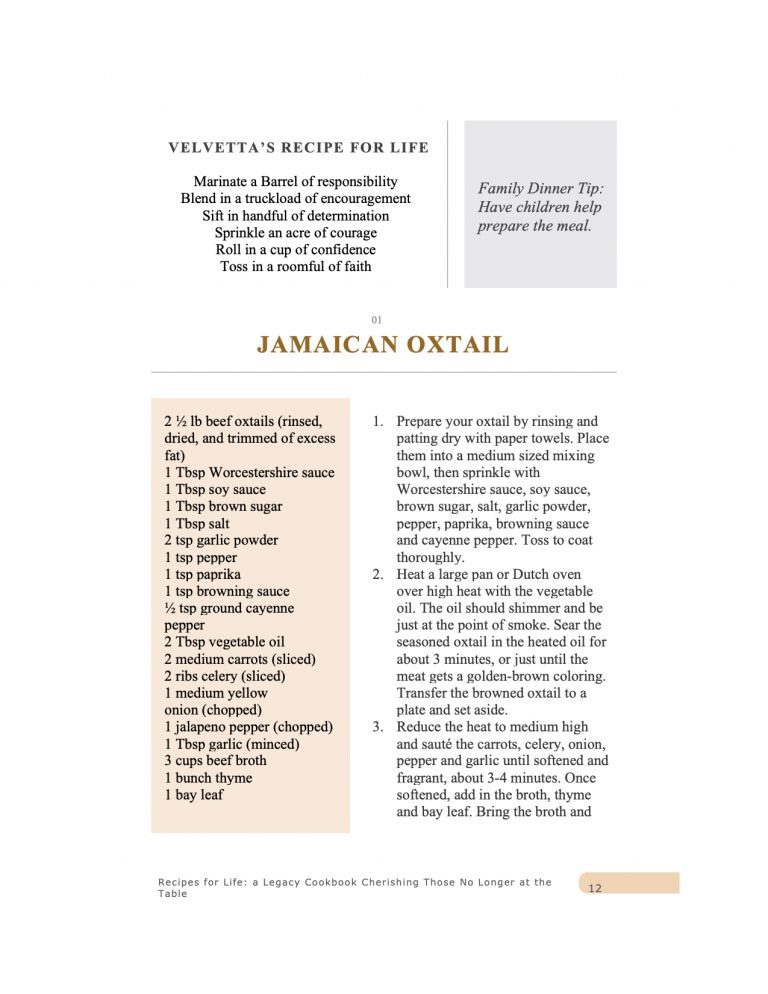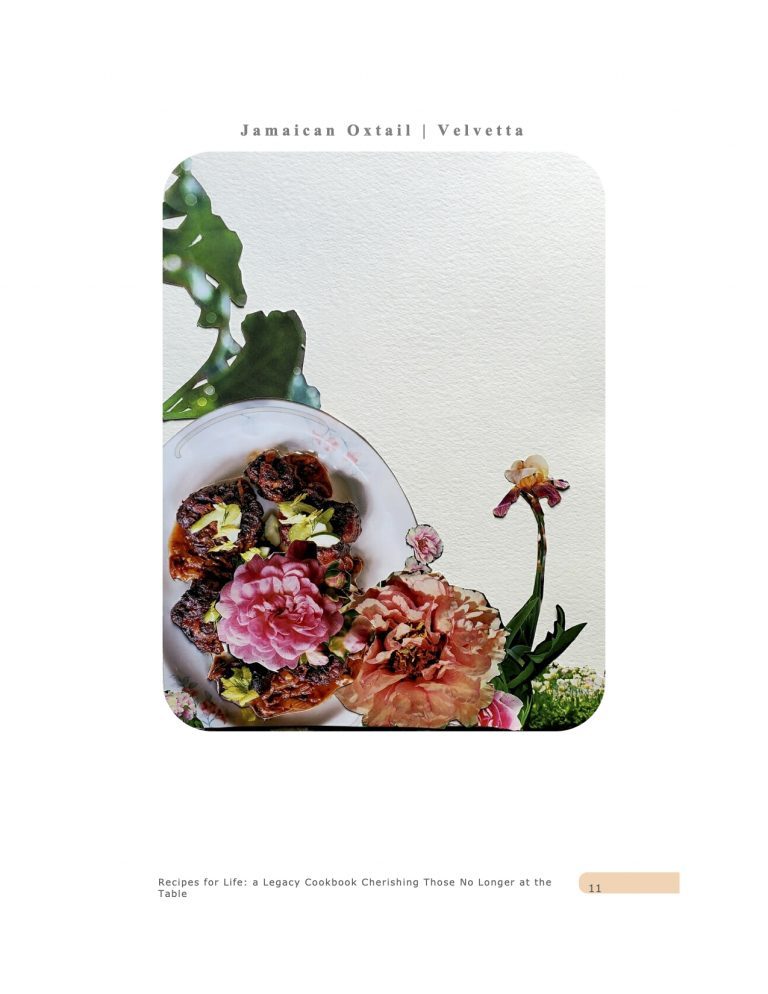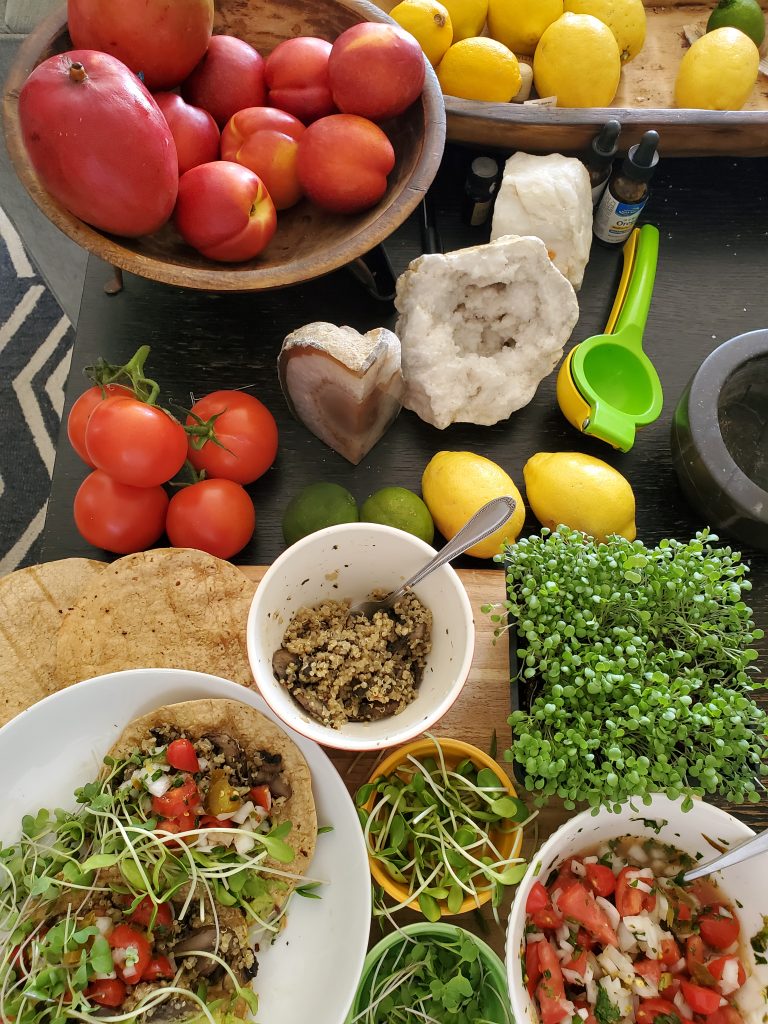The Prompt
Family gatherings and meal sharing can be some of the most significant, memorable, and joyous moments in our lives. How do our relationships to food preparation, celebratory meals, and family gatherings change when our loved ones are no longer at the table? Experiences of profound loss due to mass incarceration, state violence, other violent events, illness, and the cycle of life may change or transform our relationships to food and celebration. “Recipes for Life” is a reconnection to our cherished loved ones through recalling their favorite foods and shared stories.
STEP 1:
Interview a family member or loved one. Document their celebratory food stories and capture a recipe they cherish. Make sure the person knows in advance what the topic is so they can consent to participate and think about it in advance. Asking for stories means asking people to relive experiences; be mindful of the impact of your questions.
As you prepare to interview and talk to your family (as you define it) for this project, think about your own happiest or most memorable food and dining moments. Consider your unique traditions and how you have honored communal wisdom passed from generation to generation by word or deed or created your own traditions surrounding food and gathering. These reflections will serve as the foundation as you create your Recipes for Life Cookbook to treasure and pass down with and to loved ones.
The cookbook may contain photographs of prepared recipes, family photos of present and past gatherings and celebrations, scanned or handwritten recipes, and images or drawings of handed down artifacts, utensils, aprons, dining and kitchenware — so make sure you are organized with digital folders to capture notes and photos and other artifacts.
Interviewing tips:
- Be prepared with a notebook (paper or digital) to capture key points.
- Consider recording the interview on your phone or computer.
- If you record, make sure the person knows you are recording the session and what will happen to the recording. For example, let them know that you are going to transcribe it for your notes, that it will not be shared on social media in whole or parts, and/or other boundaries that you want to set.
- Remember that an interview is not the same thing as a conversation — you are there to prompt and listen and document. Strive to keep your own stories, biases, and memories at bay so you can be most open to insight, surprises, and delight from your interview subject.
- Ask clarifying questions throughout to gain specific details and depth in responses. “Why?” is a fine follow-up, and can lead to so much richness in your interview!
- After you ask a question, it’s okay to leave space for silence to give the person some time to think, recall, and collect their thoughts before responding.
- If you do a series of interviews, stick to the same basic flow of questions.
Questions and interview prompts to get your cookbook started:
- Tell me about some of your stand-out memories or traditions of sharing meals and family gatherings.
- What are your specific rituals, new or generational? (For example, seating, who serves, prayer, protocols, games, etc.) You may not think of these as “rituals” — they may seem to you more like habits or just “the way we do things.”
- Describe the table, place setting and food layout.
- Describe prepared dishes and how they were plated and shared.
- Where (at whose home/restaurant) do you share these meals and stories?
- Describe the feeling and ambiance of the space.
- Who has been at the table for the most celebrations and meals in the stories you told and the rituals you described?
- Who is now missing from the table?
- What were their stories, contributions, or favorite dishes, and why?
- How has their absence changed or affected these gatherings?
- Who has tended to organize these shared events, menus, cooking and food or grocery preparation (ordering)?
- What role did/do you play? What role did/do others play? How are these roles changing?
STEP 2:
Create a page in a journal or scrapbook for your loved one’s story and recipe. See an example of a recipe from the Mother’s Healing Circle below.

STEP 3:
Have your loved one and/or family member send images of the treasured recipe (could be handwritten, torn from magazines, or earmarked in books), photos of prepared foods and gatherings, and any 2-D artifacts and items to add to your scrapbook or journal.
STEP 4:
Add images and artifacts to your journal or scrapbook page with the recipe and stories.

Optional: Repeat steps 1-4 with as many family members or loved ones as you’d like to include. Once you’ve collected a few recipes, create a Recipes For Life: Legacy Cookbook by gluing photographs, recipe cards, artifacts and written stories to the pages assigned to each loved one.
STEP 5:
Scan or photograph the page(s) you made and submit your work using the online submission form below.
Respond to Janice and Sonja's Prompt
Questions? Visit our FAQ page. By submitting your response to this prompt you agree to the Terms & Conditions.
"*" indicates required fields
Recipes for Life: A Legacy Cookbook Cherishing Those No Longer at the Table
Envisioning Justice


 304
304